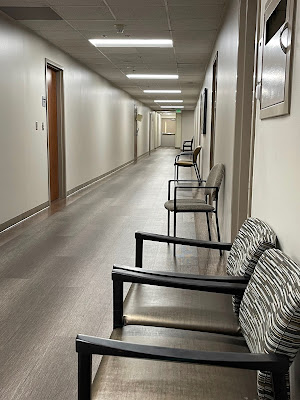As its BhamWiki entry notes, the Redmont Hotel opened in May 1925 with 250 rooms in the 14-story building. The Redmont is the oldest hotel still operating in the city, and today is part of the Hilton Curio Collection.
The back of this card tells us "The Redmont, Corner 5th Ave. and 21st St., Birmingham's newest hotel, 225 Rooms / 225 Baths, Circulating Ice Water. Direction / Dinkler Hotel Company, Dispensers of True-Southern Hospitality." Thus it was printed soon after the Redmont opened.
Louis Jacob Dinkler, a Nashville native, opened his first hotel in Macon, Georgia, in 1914. Other Dinkler hotels in Alabama included the original Tutwiler, opened in 1914 and which Dinkler was operating by 1926; and the Jefferson Davis in Montgomery. The Tutwiler was demolished in 1974. At one time the chain advertised it offered 3000 rooms around the South.
The BhamWiki resource has an extensive history of the Redmont, including the November 1, 1934, shootout between robbers and Birmingham police. On December 8, 1986, the Birmingham Post-Herald published an article by Mitch Mendelson about the first-class hotels for travelers in the city, the Redmont and the Wynfrey.




























